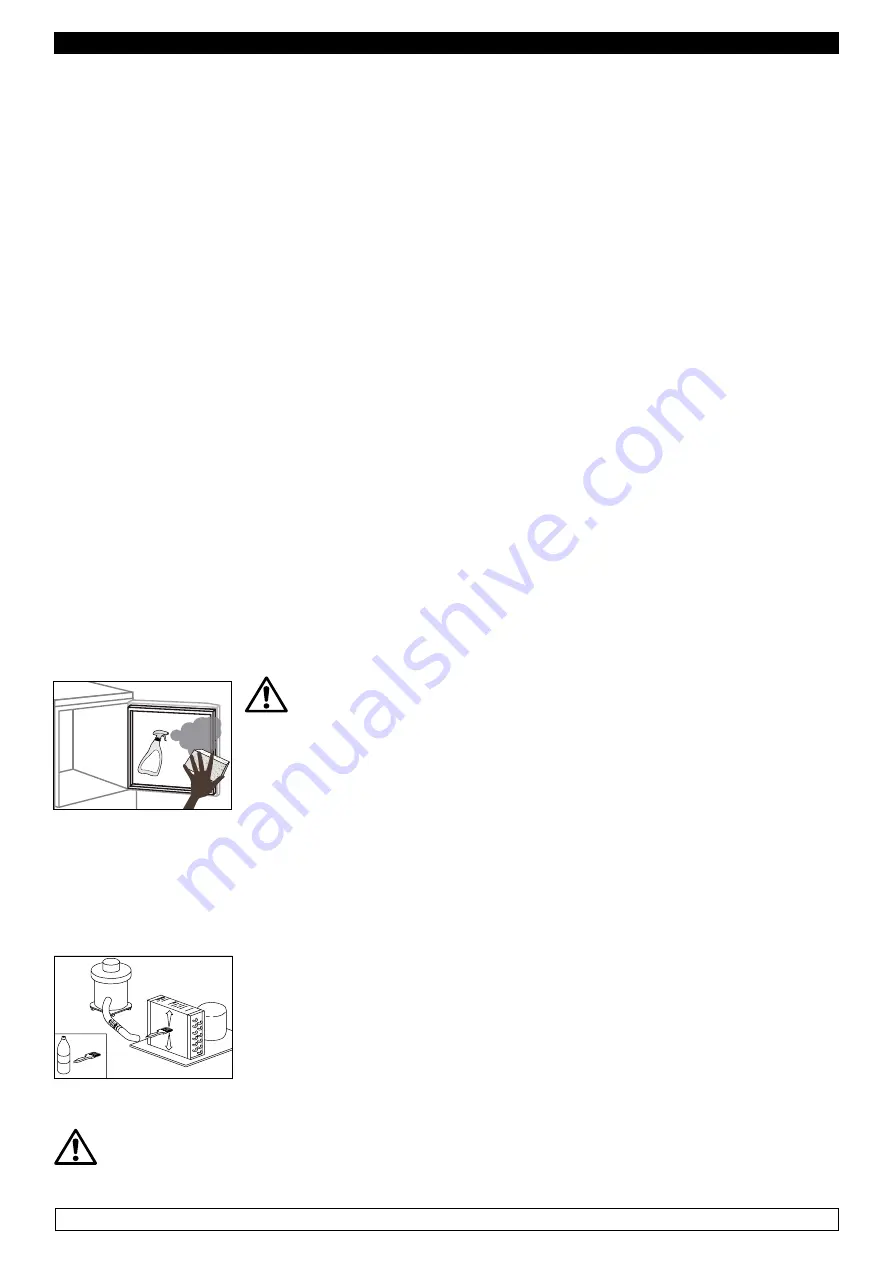
3
ENGLISH
1.1 It is prohibited to remove the guards and safety devices
t is absolutely forbidden to remove safety guards.
The manufacturer disclaims any liability for accidents due to failure to comply with this obligation.
1.2 Information on emergency operations in the event of fire
- disconnect the blast chiller from the power source or cut off the power supply
- do not use water jets
- use dry chemical or CO2 extinguishers
CHAPTER 2 CLEANING THE REFRIGERATOR
Since the blast chiller will be used to store food, cleaning is necessary for hygiene and health
protection purposes. The cleaning of the blast chiller has already been carried out at the factory. It
is suggested, however, to carry out an additional cleaning of the internal parts before use, making
sure that the power cord is unplugged.
2.1 Cleaning the interior and exterior cabinet
For this purpose the following are indicated
- the cleaning products: water and mild, non-abrasive detergents. DO NOT USE SOLVENTS AND
THINNERS
- methods for cleaning: wash the interior and exterior parts with warm water and mild soap or with a
cloth or sponge with suitable products
- disinfection: avoid substances that can alter the organoleptic characteristics of the food
- rinsing: cloth or sponge soaked in warm water. DO NOT USE WATER JETS
- frequency: weekly is recommended, the user can set different frequencies depending on the type
of food being stored.
REMARK :
Clean frequently the door seals.
Some preserved products could release some enzymes that could damage
the seals causing its quick deterioration.
For the cleaning, use only specific products for this purposes, available also
on request on our sales network.
2.2 Cleaning the condenser
The efficiency of the blast chiller is compromised by the clogging of the condenser, therefore it is
necessary to clean it on a monthly basis. Before carrying out this operation, switch off the blast chiller,
unplug the power cord and proceed as follows:
With the aid of a jet of air or dry brush, eliminate, in a vertical movement (Fig.
1), the dust and lint deposited on the fins. In the case of greasy deposits, we
recommend using a brush moistened with special cleaning agents. At this
point, proceed to clean as done with the models with fixed front panel. When
the operation is completed, restart the blast chiller. Evaporators installed above
the appliances are cartaphoresis-treated to reduce corrosion problems.
During this operation, use the following personal protective equipment: goggles, respiratory
protection mask, chemically resistant gloves (gasoline-alcohol).
ALCOOL
Fig.1



















